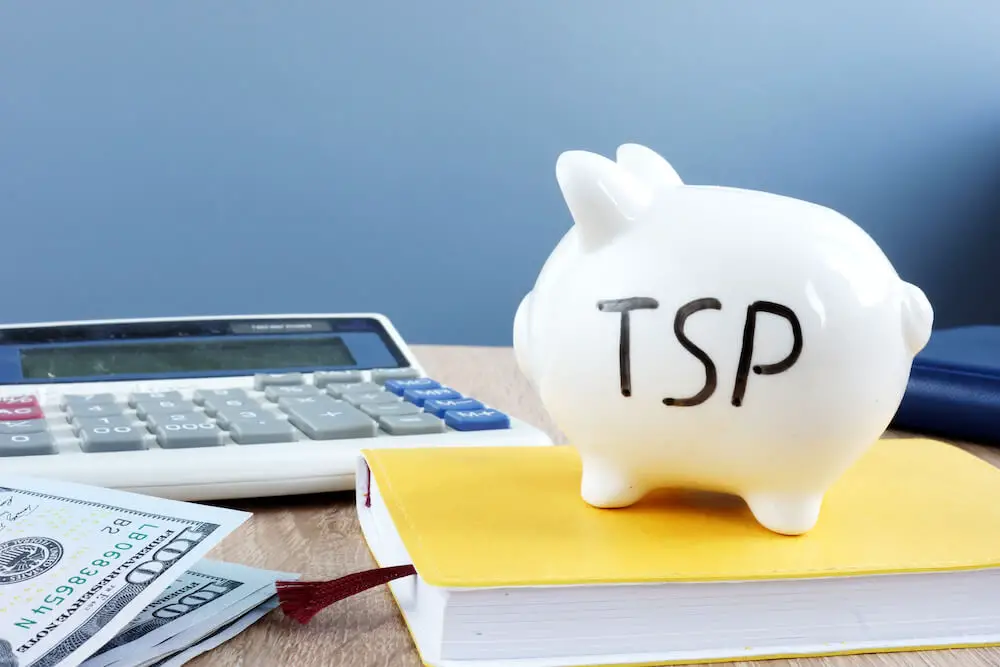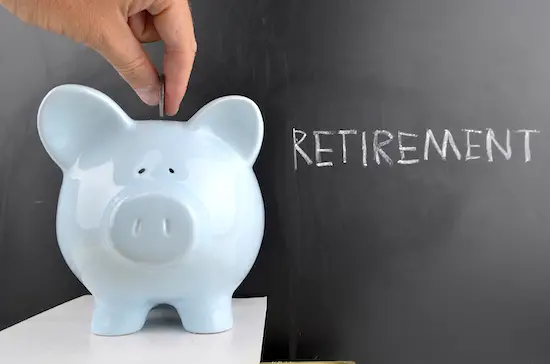As of March 20, 2021, the average annual pay for a federal employee in the United States is $109,992 a year. Income is not the same as net worth but it does indicate that most federal employees are financially ahead of most Americans. In 2019, the median household income was $68,703.
What is the TSP?
The Thrift Savings Plan (TSP) is a very popular part of a federal employee’s benefit package. The TSP was created in 1987. It is a substantial part of the future income for a retired federal employee. It is like a 401(k) for the private sector. In effect, it is a defined contribution savings plan available to federal employees and members of the uniformed services. Most federal employees are now in the Federal Employee Retirement System (FERS). The other two portions of their retirement package is Social Security and a federal annuity.
For federal employees hired after October 1st, 2020, five percent of their pay is automatically contributed to the TSP account and Uncle Sam matches this amount. For those who started working for the federal government between August 1st, 2010, and September 30th, 2020, their agencies set up an automatic enrollment with a three percent match.
The 5 percent match is deposited into the traditional balance of your TSP account unless you made a contribution election to stop or change your contributions.
As of the end of February 2021, there were about 6.2 million participants in the TSP. The average TSP balance for these participants is $115,965 and the average Roth balance was $14,885.
The TSP As a Target
The TSP is so popular it has become a target. Congress often leads the hunt to change the TSP and the more than $723 billion dollars now in the program. These proposals have ranged from wanting to divest fossil fuels from TSP investments to creating social justice funds within the TSP to setting aside a few billion to have minority and female firms invest the money on behalf of the TSP.
To date, these types of actions have never passed in Congress.
The result has been a stable, safe way for federal employees to invest in the stock market and to use their increasing wealth to fund a future retirement. The TSP has been described as a model for this type of retirement fund as it is easy to invest in it, the costs are inexpensive and there are relatively few choices to make by an investor as there are only five core funds.
New Hunter Targeting the TSP
There is now a new hunter on the prowl with the TSP in its sights.
With an average federal employee salary of about $109,000 per year, federal employees constitute a relatively wealthy portion of our society. More than 94% of federal employees who are in FERS participate in the Thift Savings Plan.
How would these investors feel about adding another 100 million or even 150 million people into the TSP?
There is no doubt the TSP would change. Federal employees would be a relatively insignificant segment of the entire TSP. In effect, the TSP would no longer be a federal employee benefit. The TSP would become a “share the wealth” program with a large segment of American society.
Proposal to Dramatically Expand the TSP
Numerous articles have appeared at about the same time proposing to expand the coverage of the TSP.
The source of these articles appears to be an organization called the “Economic Innovation Group“. The priorities of this organization include “revitalizing distressed communities through private investment” and “championing a more innovative and accessible U.S. economy”.
One way the group sees to do this is to expand the TSP to include most American workers, especially those who are at the lower end of the economic scale. The plan would provide for a government match to investments made by an individual—probably 3% to 5% of an individual’s contributions just as is done with federal employees who invest in the TSP.
As one advocate and co-author of the plan stated: “It’s the best policy the federal government has ever come up with. I think that if we were to take the TSP and make it available to everybody, and have some match, get the thing going, then it’s going to work. We have enough evidence that we can really believe it’s going to work.”
The report that outlines this plan estimates that the cost to the federal government would be about $100 billion assuming a government match of 5%.
Of course, the cost would go up if, as noted in the quote above, the TSP was expanded as a new national benefit for all Americans who could earn an extra 5% directly from the federal government into their TSP account each pay period.
There is no legislative proposal currently drafted and proposed in Congress. It is likely any new proposal would have the FRTIB run the program that would be administered by the Social Security System.
Impact on the TSP and Private Retirement Accounts
The proposal to institute such a plan does not take into consideration possible consequences.
For federal employees, “their” retirement plan would be completely different. The amount of money in such a plan would dwarf the $723 billion now in the TSP. The policies and procedures of the Federal Retirement Thrift Investment Board would have to change. Investing $723 billion is a great deal of money. Investing what would likely become a few trillion dollars is a much different scenario. One can envision a scenario in which the TSP no longer seeks what is best for the federal workforce as the larger concern would be what is best for the new, and much larger, TSP fund with hordes of new investors entering the program.
It is likely such a fund would veer away from stocks and their relative instability and, instead, go in the direction of a G Fund. That has lower returns but does not have the volatility of stocks. Politicians do not like an electorate that is upset and seeing the retirement fund go down 10 or 20% would generate considerable angst. If this happens, the more frequent higher returns enjoyed by TSP investors could disappear and become more like the “safe and secure” G Fund. This type of investment may lose money to the ravages of inflation but would create less political stress.
No one really knows what would happen to investment returns in such a scenario. No doubt, the federal government would control much of the nation’s wealth. If $723 billion is a target for those in Congress to use for their political objectives, just think of what could be done “for the greater good” with preferred Congressional programs seeking a chunk of that investment money.
It is also likely that such a fund would wipe out much of the wealth that is now with private investment firms. Instead, the federal government, an inherently political institution, would control massive wealth and many or even most Americans would be dependent on payments from the federal government into their TSP accounts.
As noted in the report outlining this proposal, the view of the authors in the report is that “sentiments regarding capitalism are so mixed given how little capital a large share of the population owns.” In other words, the plan arguably provides for a replacement of capitalism with control of wealth by the government rather than individuals.





